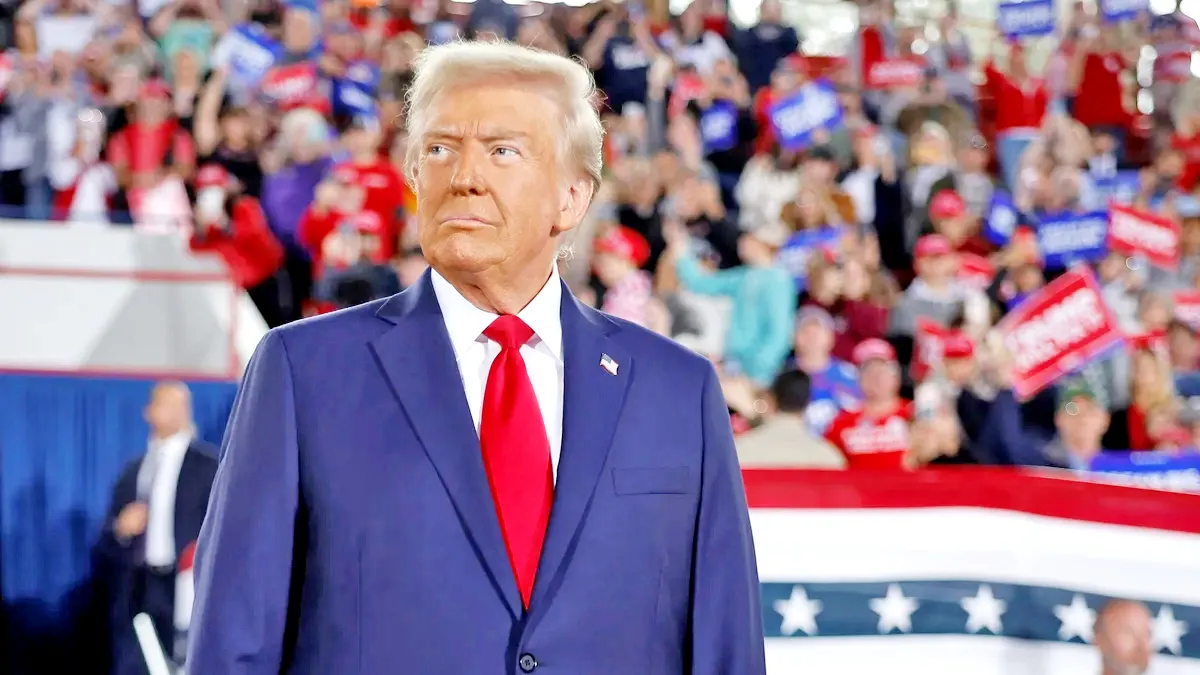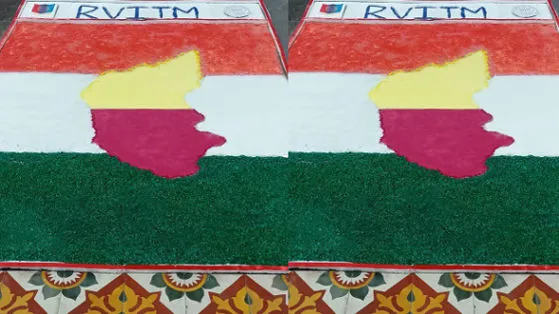The fierce political battle in the upcoming Assembly elections in West Bengal between Trinamool Congress (TMC) and the Bharatiya Janata Party (BJP) is being fought on a political as well as a cultural plane. The latest instance of this was seen at the Central government’s celebration of the 125th birth anniversary of Netaji Subhas Chandra Bose in Kolkata. Annoyed by some people raising slogans of ‘Jai Shri Ram’ just before her address at the programme, Chief Minister Mamata Banerjee refused to speak, considering the slogan a personal insult. PM Narendra Modi was present on the stage too.
Banerjee’s indignation at the ‘Jai Shri Ram’ slogan being raised is not new. In 2019, hearing some people shout ‘Jai Shri Ram’ near Banerjee’s convoy, Banerjee had gotten out of her car to confront them. While supporting Banerjee, Prof. Amartya Sen, a bitter critic of PM Narendra Modi, who has been residing out of India for a long time, announced that ‘Jai Shri Ram’ is not connected to Bengali society and culture.
A few days later, in a government school›s Xth grade test in Bengal, a provocative question was asked: ‘Write a report on Jai Shri Ram›s slogan’s harmful effect on society’. Besides these instances, a video which went viral on social media last November showed a leader from Mamata Banerjee›s TMC threatening people at a meeting, claiming that those who want to stay in Bengal can’t raise slogans of ‹Jai Shri Ram›, and that one can do so only in Modi›s Gujarat. Cultural organisations and intellectuals associated with the TMC even gave a political colour to the festival of Ram Navami (Lord Ram’s birth anniversary), reading it as an imposition of North Indian culture on Bengal.
A big and pertinent question that comes to mind here is: Mamata didi Ko ‘Jai Shri Ram’ par gussa kyon aata hai?”, translating to, ‘why does Mamata didi get angry at the phrase ‘Jai Shri Ram›?’ Another relevant question which arises is: does Lord Shri Ram have nothing to do with Bengali culture? What kind of divisive politics is this that treats Lord Shri Ram like the “other”?
The strongest pitch for Mamata Banerjee›s political power, which is facing an anti-incumbency wave now, is the Muslim vote-bank of West Bengal, where Muslims constitute about 30% of the population. Banerjee usually pulls out all the stops to woo them, and in doing so, she can be seen leaning deliberately and inordinately towards Muslim religious symbols.
The BJP has shown its support for the Ram Janmabhoomi Jan Andolan and its attempt to unite the nation through its cultural heritage and through the teachings of Shri Ram, the cultural icon of India. But the so-called secularist parties and extremist Muslims have been showing a strong aversion to this cultural heritage. Banerjee, by evincing anger at the slogan ‹Jai Shri Ram›, wishes to garner Muslim votes. However, Asaduddin Owaisi arriving in the Bengal Assembly election and Maulana Abbas Siddiqui, the influential cleric of Bengal›s Furfura Sharif Dargah, announcing the formation of a new political party have rattled Mamata Didi. Fearing a division in the Muslim vote, and unable to contain her fear of losing her power, she has been losing her temper more often, especially at the cry of ‹Jai Shri Ram›. The fact that Muslims are a significant vote bank for Mamata has been averred even by the Shiv Sena, a huge antagonist of the BJP, currently in a recent issue of its mouthpiece, Saamana.
However, in this political ruckus, Shri Ram is being projected, quite deceitfully, as the cultural icon of only North India and an outsider for Bengali culture. It would be pertinent to remember that among Indo-Aryan languages, after Sanskrit and Apabhramsa, the first Ramayana was composed not in Hindi or Gujarati, but in Bengali. In the fifteenth century, the Bangla poet Krittivas composed the Krittivasi Ramayana or the Shriram Panchali in Bangla, one century before the Ramcharit Manas by Hindi poet Tulsidas, which is the most popular ‘Ram Katha’. The Krittivasi Ramayana has the same popularity in Bengal as the Ramcharit Manas in Hindi-speaking regions. Ruth Vanita, a professor of literary history and culture at the University of Montana, USA, states in her study that, in pre-modern Bengal, before the advent of the British, the Krittivasi Ramayana was the most popular book, and remains in widespread circulation even in the twenty-first century.
Those reading Bengali culture as separate from mainstream Indian culture need to realize the magnitude of the impact of the Krittivasi Ramayana on the ‘Ram Kathas’ in other Indian languages. For example, when Sri Ram was frustrated in the Rama-Ravana war, Ram worshiped Shakti (i.e. Goddess Durga) and conquered Ravana. This was a novel ideation by Krittivas, and different from Valmiki’s Adi Ramayana. Influenced by this narrative of ‘Shakti-Aradhana’ by Ram, noted Hindi poet Nirala composed his famous poetic work “Ram Ki Shakti Pooja”.
It’s also worth noting that although ‘Ram Kathas’ were written in almost all Indian languages, its immense popularity in Bengal can be gauged from the fact that after Hindi, most ‘Ram Kathas’ have been written in Bangla. It’s not without reason that Chaitanya Mahaprabhu’s «Hare Rama-Hare Krishna» chant resonated throughout Bengal in the medieval period.
Nobel laureate and Indian intellectual hailing from Bengal, Rabindranath Tagore was also an admirer of Shri Ram›s character. Bhabatosh Dutt, a Padma Vibhushan awardee and noted educationist, in his book Ravindranath Tagore on the Ramayana and the Mahabharata, writes that for Tagore, Shri Ram embodied the highest ideals of mankind. Tagore himself, in his preface of the dance-drama Rakta Karabi and in the poetic composition “Ahalyar Prati››, described Shri Ram›s character as synonymous with delightfulness, beauty, peace and greatness.
If such world renowned saints and intellectuals from Bengal took pride in Hindu religious and cultural figures, then should we compartmentalise them to a certain region of India for promoting sectarian politics? The answer of any average Indian, whether Hindu or Muslim, will be a big NO! Let us not forget that Indians celebrate Eid with sewai and Christmas with cake with just as much gusto as they celebrate Deepawali. Unfortunately, besides Bengal, some prominent leaders and intellectuals from Tamil Nadu also toe the line for cheap gains.
There are reasons behind propagating such cultural controversy surrounding Shri Ram. The obvious reason is a battle for political supremacy, furthered by the half-baked understanding of Hindu philosophy and religion, wherein various gods and goddesses are bracketed into being region- and sect-specific. This can be seen as the effect of the monotheistic thinking of the West, whereby ‘Shaiva’ (Shiva-worshipper), ‘Vaishnava’ (worshipper of Vishnu-Ram-Krishna) and ‘Shakta’ (worshipper of Shakti or Durga) are considered to be different from, sometimes even opposed to, each other, whereas ‘Ram-bhakt’ Tulsidas wrote (for Ram) that «Shiv-drohi Mama Das Kahaava, Soi Nar Mohi Sapnehu Nahi Bhaava”, meaning that “he who is opposed to Shiva is not dear to me (Ram), even in my dreams, even if he is my slave”. On one hand, Shri Ram worships Durga as mother, and on the other hand, Shri Ram himself is the ‘Ishta-Deva’ (presiding deity) of Lord Shiva, the husband of Goddess Durga.
Another hallmark of the integral relationship between Lord Shiva and Lord Ram can be seen at the Ramanathaswamy Temple in Rameswaram, Tamil Nadu, one of the holiest pilgrimages for Hindus and one among the ‘four dhaams’. Here, Shiva is worshipped as a deity of Rama. Even the name of the district, Ramanathapuram (abode of Master of Lord Rama), is suggestive of the same. On the other side, people in North India also worship ‘Kali’ at Dakshineshwar in Kolkata or ‘Kamakhya Devi’ in Guwahati or ‘Vaishno Devi’ in Jammu—all forms of Durga—with the same spirit of veneration as they worship Lord Ram.
It is also noteworthy that Shri Ram has been popular not only among the upper castes, but also the dalits, OBCs and tribal people, as well as Muslims, a fact which demolishes any sectarian propaganda. Rahim, a contemporary of Tulsidas, saluted Rama, and Muhammad Iqbal, the noted poet, viewed Shri Ram not as the god of only Hindus, but as a symbol of India›s cultural heritage. Saying ‘Jai Ram-ji Ki’ or ‘Ram-Ram’ informally is a cultural practice and not a religious one. ‹Jai Shri Ram› is simply another form of this greeting, which spread because of popular culture, most notably, the TV series Ramayana.
According to Camille Bulcke, a Belgian missionary and an authentic scholar of ‘Ram-Kathas’, the ideals, values and social harmony that Sri Ram reflected upon and struggled for are built into the entire Indian society and culture. Those who mislead in the name of Shri Ram must understand that it’s not what Krittibasi Ramayana or Rabindranath Tagore believed in and it is not what the great Bengali society stands or is known for.
The writer is an academician teaching at the Central Department of Hindi, University of Delhi. He has earlier taught in various universities in the US. The views expressed are personal.






















